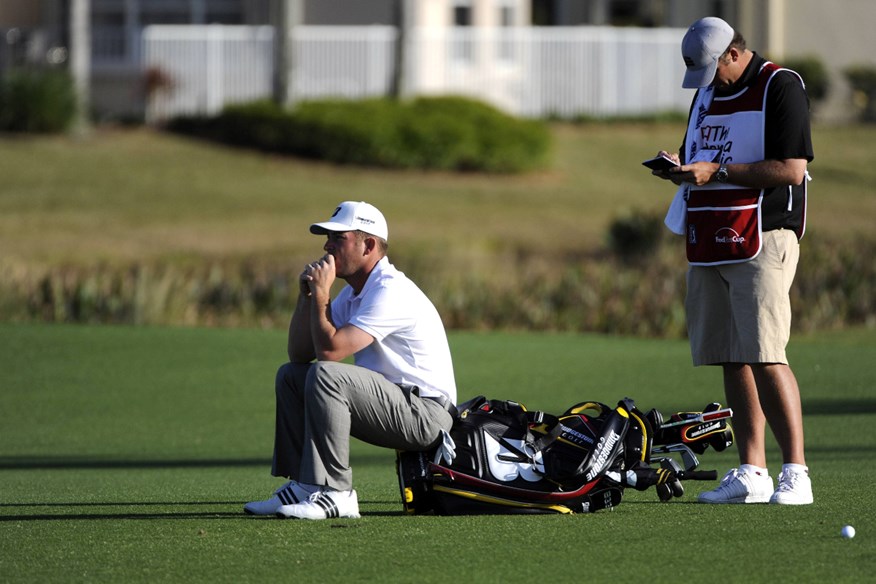The PGA Tour launched its new ‘slow play killer’ last week – but did it work?
Last updated:

The PGA Tour introduced live pace of play tracking at the Rocket Classic to hold players accountable for slow play – but did it work?
The PGA Tour debuted a new pace of play feature at the Rocket Classic in a bid to tackle one of the biggest issues in professional golf – but did it work? Did anyone even notice?
For years, slow play has plagued the PGA Tour. Rounds drag on for six hours, Friday afternoon groupings sometimes spill over into Saturday mornings, and fans are left frustrated.
Despite numerous conversations on the topic of slow play, players have received little in the way of a deterrent and have continued to abuse the system. However, things could finally be about to change.
Under a new system, used for the first time at last week’s Rocket Classic, slow players should have nowhere to hide. Here’s how it works…
How the PGA Tour’s new pace of play information works
- Pace of play information per hole and per group will now be available across the PGA Tour website and on broadcasts. This allows fans to see who is to blame for slow play and helps officials when issuing warnings and putting groups on the clock.
- The two key things being monitored are:
- Time Par: how long a group takes to complete each hole, compared to what is expected.
- Position Relative to the Group Ahead: whether they are in position relative to the game in front of have fallen behind.
- If a group exceeds the Time Par but is still in position, it’s considered acceptable.
- But if they’re both slow and out of position, officials can step in with warnings or penalties.
So how did it go in Detroit?
In practice, the debut felt like a soft launch nobody was prepared for.
To even find the data, you had to dig into the “Course Stats” tab of the PGA Tour live leaderboard – a section so obscure that casual fans would never stumble across it. And once play wrapped up for the day, that information vanished, making any kind of retroactive analysis impossible.
Even if you did watch live, the promised graphics – showing which groups were lagging behind – were nowhere to be seen on the broadcasts. Apparently, that element is “coming soon”, though the PGA Tour hasn’t given a clear timeline. If you were hoping to see chronic dawdlers shamed into speeding up, you were out of luck.

What does this tell us?
At the very least, the PGA Tour is acknowledging that slow play is more than an inconvenience – it’s a problem that undermines the product.
This new data is a start, but it needs to be applied properly.
Over the four days in Detroit, there were no public statements about pace of play infractions. No groups were penalized, and no names were called out. Most fans could have watched a whole weekend of action without knowing anything had changed. If the PGA Tour wants fans to believe this initiative matters, it needs to do more than bury the numbers on a website and delete them as soon as the round is done.
The PGA Tour may be giving its stars time to get used to the system before fully laying them bare for all to see.
But until the PGA Tour is willing to publicly highlight the worst offenders – and, more importantly, dock them shots instead of just demanding meaningless cheques – these measures will remain little more than window dressing. Slow play won’t go away because of a few hidden stats. It will go away when the cost of wasting everyone’s time finally outweighs the benefits.
